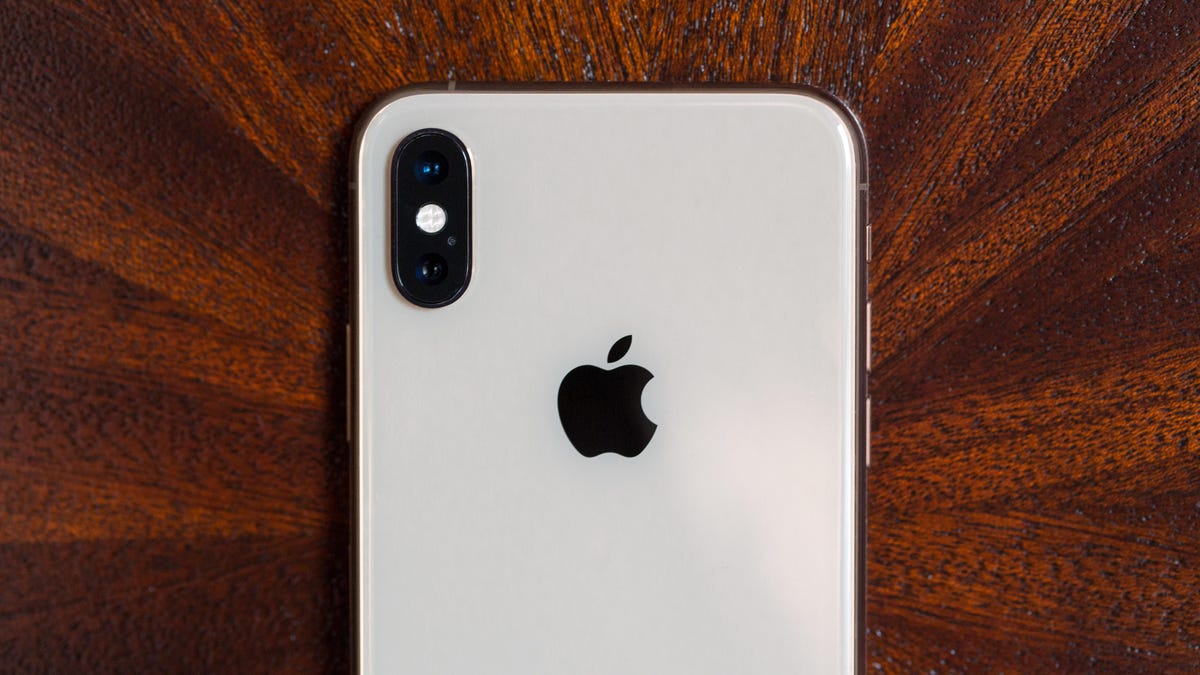Apple iPhone sales drop, but services and wearables offer a boost
Services revenue, a bright spot for the company, posted an all-time high.

The iPhone continues to be the key revenue driver for Apple.
Apple's iPhone sales continued to slip in its latest quarter, but the tech giant's results were still ahead of Wall Street's expectations.
The Cupertino, California, company on Tuesday reported iPhone revenue for the fiscal second quarter fell 17% to $31.1 billion. The result beat analyst projections of $30.5 billion, according to Bloomberg. As a notable bright spot, services revenue reached an all-time high of $11.5 billion, up 16%.
In total, Apple posted a fiscal second-quarter profit of $11.6 billion, or a better-than-expected $2.46 a share, down 16% from a year earlier. Revenue, which also beat forecasts, was $58 billion, down 5%. Analyst had forecast $2.36 a share on revenue of $57.4 billion, according to Yahoo Finance.
Apple expects to post fiscal third-quarter revenue of $52.5 billion to $54.5 billion, better than analysts' forecasts of $51.9 billion.
Apple shares jumped 5% after the market close thanks to the better-than-anticipated results and guidance.
The results come amid the company's attempt to build up its services business, which include the App Store and Apple Music . That work has become increasingly important for the company since consumers aren't buying new smartphones -- by far Apple's biggest revenue maker -- as often as they did a few years ago.
Highlighting the focus on services, Apple hosted an entire event last month that featured only new services, including Apple TV Plus, Apple News Plus and its Apple Arcade gaming service, which all require a subscription.
The transformation is an acknowledgement that parts of its hardware business are starting to mature, and that it's getting tougher for even Apple to convince you to buy a new iPhone at a regular pace. Since it isn't selling customers phones as often, Apple has decided to charge more for each device, a move that's helped prop up the iPhone business despite lighter demand. Its latest models of iPhones go for as much as $1,449, several hundred dollars more than some Apple laptops .
The company said in November that it'd stop disclosing how many iPhones it sells, which many interpreted as a red flag. But the company has been able to obscure the exact data since its higher-priced phones continue to generate an impressive amount of revenue.
Even though iPhone sales slumped in the latest quarter, CEO Tim Cook told analysts Tuesday that iPhone sales have perked up since a particularly bad November and December.
"For iPhone, while our worldwide revenue was down 17% from a year ago, declines were significantly smaller in the final weeks of the March quarter," he said, later adding, "This is an encouraging trend. We like the direction we're headed with iPhone, and our goal now is to pick up the pace."
China has been an area of weakness for Apple but Cook said that market, too, is showing signs of improvement thanks to trade negotiations between the Chinese government and the White House, as well as Apple's work cutting prices.
Apple executives repeatedly touted the growing services business, saying the company had 390 million paid subscribers at the end of March, though they didn't specify which services had the most subscribers. Finance chief Luca Maestri said these paid subscriptions should surpass 500 million by 2020.
Services revenue wasn't the only strong point in Apple's smaller business lines. Sales of iPads jumped 22% to $4.9 billion, which Cook called out as "our strongest iPad growth in six years." Growth came mostly from more expensive iPad Pro sales.
The wearables, home and accessories business revenue jumped 30% to $5.1 billion. That result was helped along by a nearly 50% jump in the wearables business, which includes the Apple Watch and AirPods .
"Demand has been incredible. This is nothing less than a cultural phenomenon," Cook said of AirPod sales.
Meanwhile, the more mature Mac desktop and laptop business posted a 4.5% revenue drop to $5.5 billion.
Yoram Wurmser, an analyst for eMarketer, said that despite the solid improvement in wearables and services, both those businesses depend on the iPhone. "So it's worrisome that iPhone sales fell," he said.
The tech giant also boosted its quarterly dividend by 5% to 77 cents a share and increased its share repurchase program by $75 billion, moves that are sure to please investors. Even with Apple continuing to give back money to its shareholders, it said it ended the quarter with a net cash balance of $113 billion.
Earlier this month, Apple and chipmaker Qualcomm settled a two-year-old patent licensing dispute. While Apple had used Qualcomm chips for years in its phones, it avoided doing so in its latest lineup due to the litigation.
Cook avoided saying much about the settlement, saying: "We're glad to put the litigation behind us ... We feel good about the resolution."
First published at 1:36 p.m. PT.
Updated at 3:43 p.m.: Adds more details throughout from analyst call.

